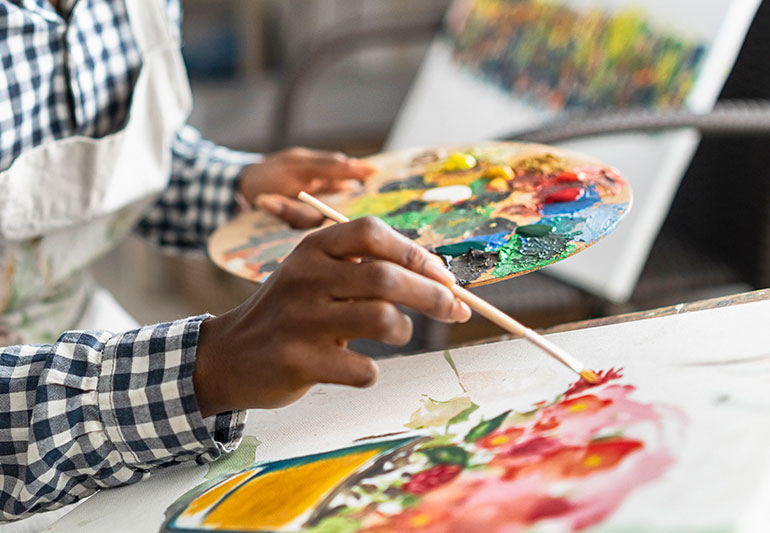
Art Therapy
Art therapy is a form of psychotherapy that uses art-making as a means to explore emotions, express oneself, and resolve personal conflicts. It is based on the belief that the creative process involved in art-making can be healing and therapeutic for the individual. Art therapy can be used with individuals of all ages, from children to adults. It can be used with people who have mental health issues, as well as those who are dealing with physical health issues or life-changing events. Art therapy as we know it today was invented in the 1940s by a psychiatrist named Carl Jung. He believed that art could be used as a tool to help patients express their innermost thoughts and feelings, and to access parts of the unconscious mind. Today, art therapy is used to treat a wide range of mental health issues, from anxiety and depression to trauma and substance abuse.
The goal of art therapy is to help individuals find a way to express themselves that they may not be able to find through traditional means of communication. It is also a way for the individual to explore their emotions and thoughts in a safe and non-threatening environment. Art therapy is led by a qualified art therapist who has completed a master’s level program in art therapy. The therapist will use their knowledge of the creative process, psychology and human development to help guide the individual through their art-making. The therapist will also provide support and interpretation of the art that is created. They will help the individual to understand the meaning of their art and how it relates to their personal life.

The process of becoming a licensed art therapist will vary depending on the country or state in which you practice. However, there are some general steps that you can take to become a licensed art therapist. Firstly, you will need to complete an accredited art therapy program. This will involve completing both academic coursework and clinical training to become a competent art therapist. Once you have completed your art therapy program, you will then need to obtain licensure to practice. The requirements for licensure will vary from state to state, but will generally involve passing an exam and completing a certain number of hours of clinical experience. Once you are licensed, you will be able to set up your private practice or work in a variety of settings, such as hospitals, schools, or mental health clinics. If you are interested in becoming an art therapist, it is important to research the requirements in your specific country or state to ensure that you are taking the necessary steps to become licensed.
There is a lot of stigma around art therapy, with people thinking that it is only for “crazy” people or people with mental health issues. This is not the case! Art therapy is a great way for anyone to express themselves creatively and can be very therapeutic, almost as therapeutic as typing in your WooCasino login and playing a round online.




